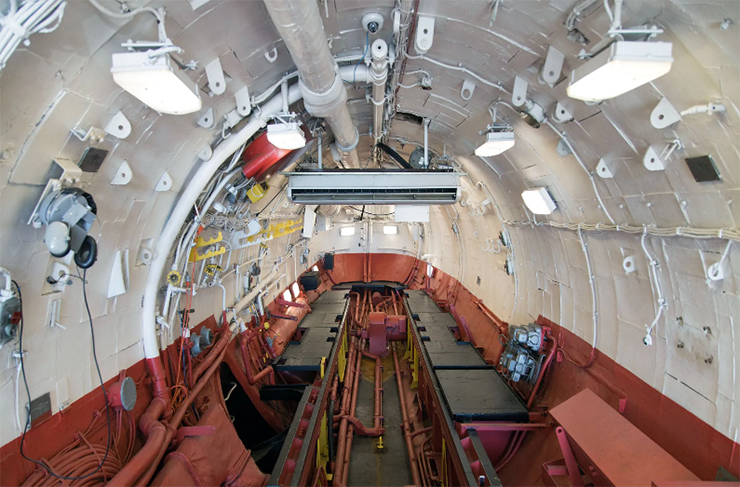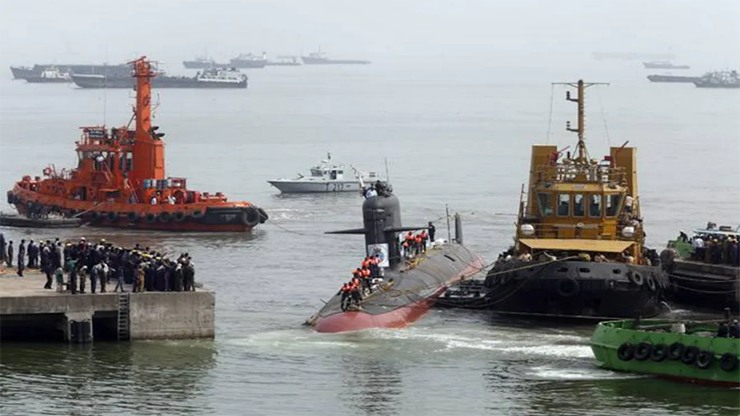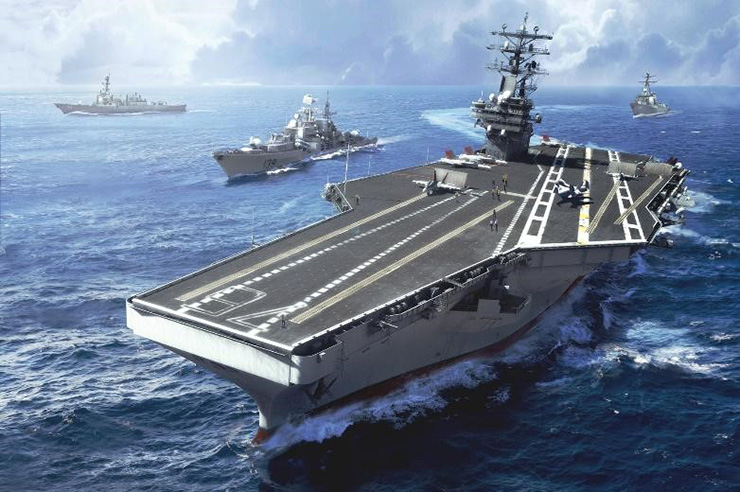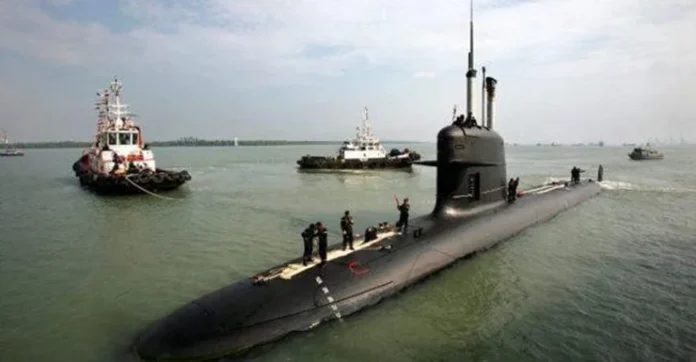Mega Assets: There have been a number of recent reports on the Indian Navy’s new procurements, shipbuilding and joint collaborations with foreign and domestic firms. The Navy has been looking for swift upgradation of its surface and sub-surface fighting capabilities. The induction of the new Vikrant, the second aircraft carrier, and sea trials for the final of the six Kalvari class submarine Vaghsheer, in the recent past have drawn much attention. While these projects have now been realised to an extent, the Navy’s concerns are far from being fully addressed.
In 1997, the Navy laid out its core requirements, especially in sub-surface capabilities for 24 submarines. Keeping self-efficiency in mind, it was later altered to build 12 new submarines locally as project P-75 and P-75(I). The plan included joint production with foreign firms, substantial technology transfer and construction in India. The procedure then followed, carried on with little success, the major hurdle being the charting of qualitative requirements. Since the projects were meant for future compatibility very few such technologies were available for commercial negotiations. In a few instances if it was indeed available, either the host governments were not willing to part with them or technology was not sea proven. These issues acted as severe hurdles in the expected progress.
Current Capacity
An Aircraft Carrier and Submarine force of a nation are considered initial tools of power projection. Global Fire Power in its 2023 report highlighted submarine fleet strength by the world’s top navies wherein, China with 78, Russia with 70 and the US with 68 submarines are the top three global players. India with 18 submarines is at a distant eight on the list. The very slow movement on the P-75(I) started to become a matter of concern in the power corridors, especially considering rapid changes in the neighbourhood.
A September 2020 report in China Youth News highlighted how China has laid down great emphasis towards capacity build-up in sea domination, and amphibious as well as paratrooping capabilities to support viable Taiwan operations. In November 2021, PLA Daily reported that the PLA Army Navy Marine Corps (PLANMC) tested its paradropping capabilities over the sea. These lessons have resulted in the development of some top-class naval assets and airlift platforms by China such as the 7,500T Luyang III guided-missile Type-52D destroyers and the larger 13,000T Type-55 Renhai-class guided-missile cruisers and Y-20 heavy lift aircraft.

New Capability
The plan to substantially augment submarine strength was to run concurrently with two projects P-75 and P-75(I) and was conceived to be completed by the middle of 2020. While work on P-75 commenced in 2005, the upgraded P-75(I) faced challenges with technical issues. The Navy’s requirement for a proven Air Independent Propulsion (AIP) system became a major sticking point. An AIP-equipped Diesel Electric Submarine allows it to remain underwater for almost 12-15 days than a conventional Diesel Electric Submarine which has to surface every 2-3 days to charge its batteries.
In 2019, another Expression of Interest (EOI) was issued for P-75(I) which included capability for land-attack and anti-ship cruise missiles. By September 2019, five bidders Naval Group of France, ThyssenKrupp Marine Systems (TKMS) of Germany, Rosoboronexport of Russia, Daewoo of South Korea and Spain’s Navantia had responded. Later in July 2021, the Naval Group of France, Rosoboronexport of Russia and Spain’s Navantia were left out as they did not have any proven AIP system, leaving only German and South Korean firms in contention.
All this while the Navy was clear on a few aspects of the requirements viz. need for API, construction in India and transfer of technology with an Indian partner. Since both Pakistan and China have AIP-capable submarines in their fleet, the Navy’s insistence on this technology was highly justifiable. TKMS initiated the process and chose Mazagon Dock Shipbuilders Limited (MDL) of India as its local partner to undertake the complete construction of these Submarines.

Capacity Buildup
A notable spinoff of this project has been the government’s acceptance of a new perspective in the management of very high-end defence requirements. The challenges of finding technology or a global supplier apart there were domestic concerns with regards to absorption of the new technology. This time the government allowed even the private sector to be part of bidding. This will be a huge test for the development of indigenous defence companies which must rise to the massive requirements if they are serious about future prospects.
It is commendable that private companies like L&T Shipbuilding indeed stepped forward with requisite conviction. Developing a massive platform like a submarine with future-oriented front-line technology is a completely different ball game than producing some parts and components. It is not a showdown on the public sector firms but a statement of the evolution of Indian Private Defence Industries. For India, in the foreseeable future, there are massive opportunities available, and both public as well as private sector defence companies must reorient rather than complement each other’s growth.
Since the project incorporates the transfer of advanced technologies it also showcases India’s acceptance as a responsible power. Wherein, the world is prepared to share advanced know-how and sensitive technologies. The knowledge gained would be immensely helpful for the development of something like deep-diving autonomous vessels which are yet a future platform and require mastering knowledge of underwater imaging, underwater sensing and underwater navigation among others before taking some developmental shape. These spin offs would add strength and asset augmentation for future-ready indigenous platforms.

New Dimension
Asia is increasingly becoming a complex domain for geopolitical influence. The last decade has suddenly witnessed a spiralling of power play in the region. There has been increased Chinese assertiveness, US recalibration in Asia, Japan & Australia adopting a whole new security outlook, Russia in spite of challenges in Europe is willing to enhance its stakes in the region and NATO’s recent proposal of a ‘Liaison Office’ in Japan as part of its Asian outreach. These are the tough realities and as few observers suggest, all these probably manifested much quicker than India has anticipated.
India has been a close observer of these rapidly evolving geopolitical challenges. It has continued to advocate for free, open and responsible access to international resources for all, based on globally accepted norms. Basically, it implies that no coercive tactic through self-justified historical distortions will be acceptable, and if needed, it will be pushed back. To achieve such strategic aims the country needs to have means to implement its national will. India will be looking to move fast on its strategic projects while ensuring it closes the gap with evolving technologies. A re-oriented approach to Defence Diplomacy will prove key to such realisation.
–The writer has varied experience in the security paradigm and is a keen follower of international geopolitics. His work has been routinely featured in national publications and newspapers. His articles can be viewed on the popular blog site newsanalytics.co.in on geo-strategic affairs. The views expressed are personal and do not necessarily reflect the views of Raksha Anirveda
-The writer has varied experience in the security paradigm and is a keen follower of global geopolitics. His work has been regularly featured in national publications. Visit newsanalytics.in to access more articles from the author. The views expressed are of the writer and do not necessarily reflect the views of Raksha Anirveda





